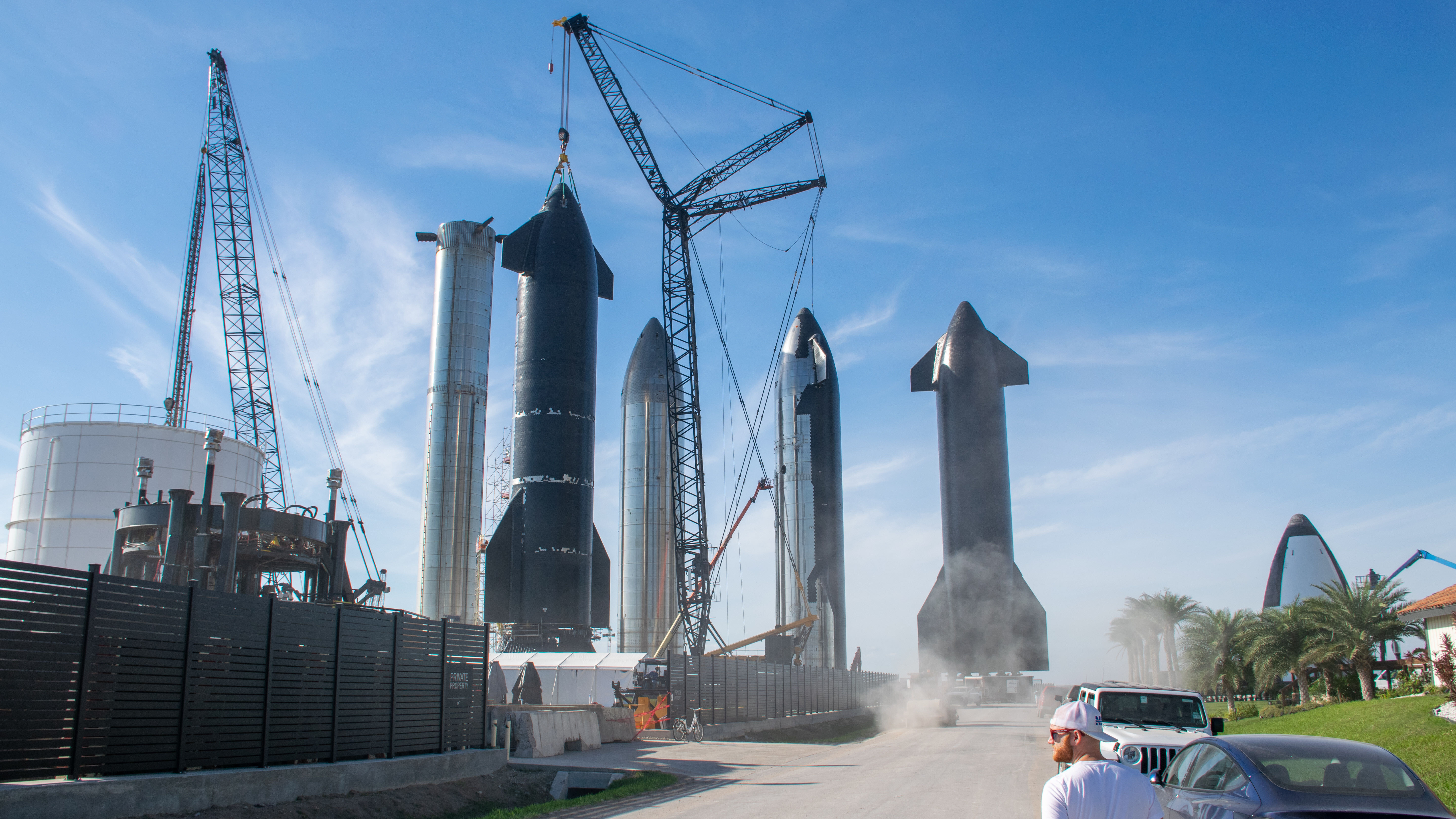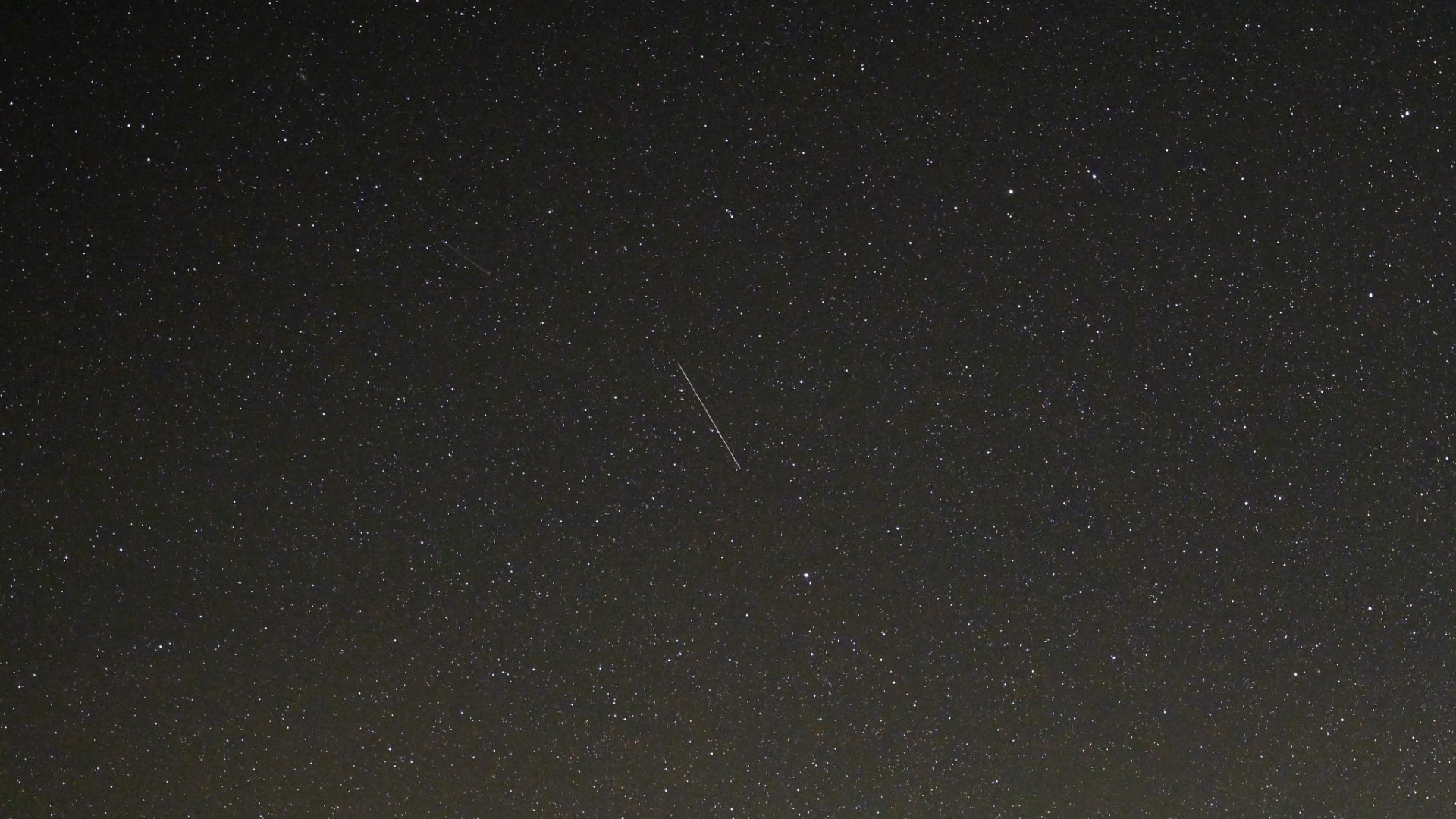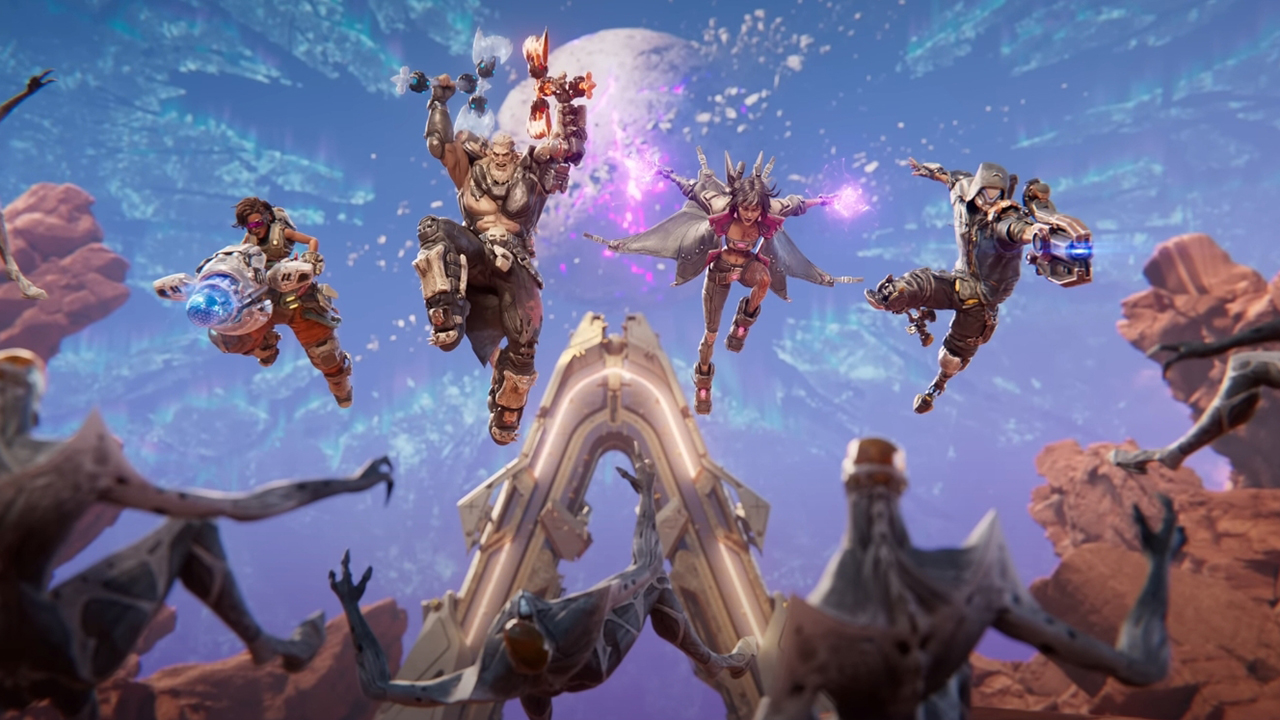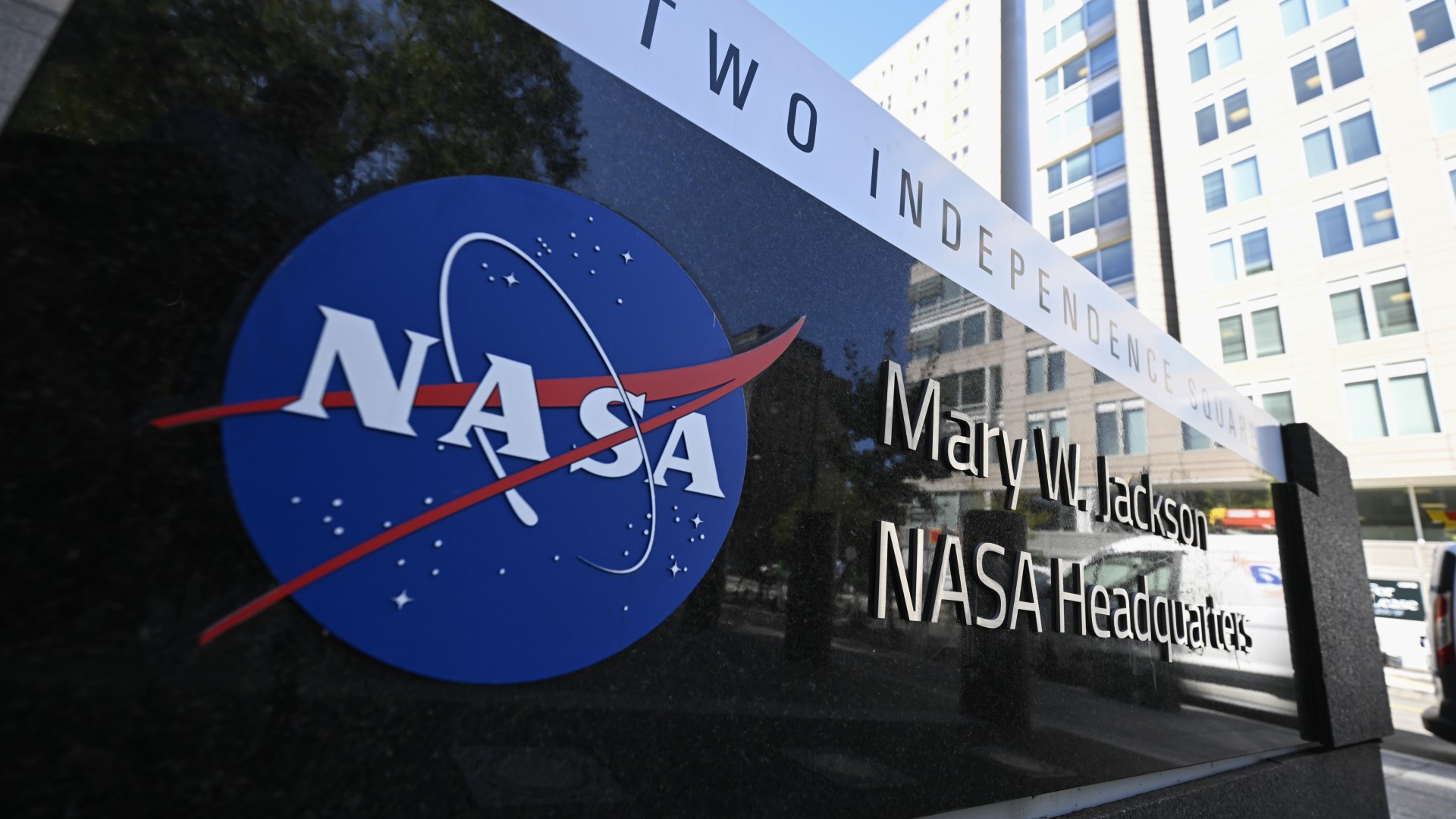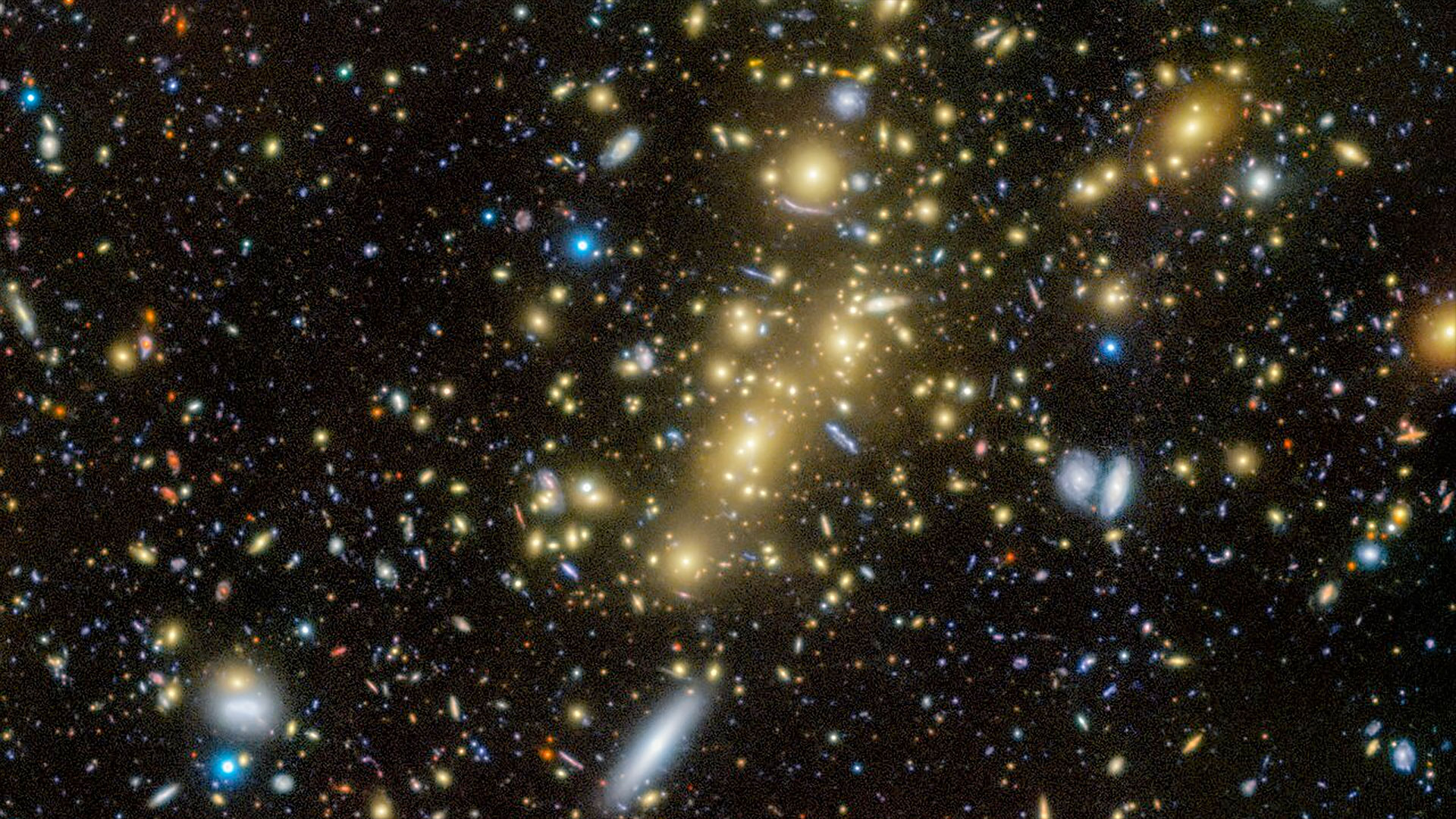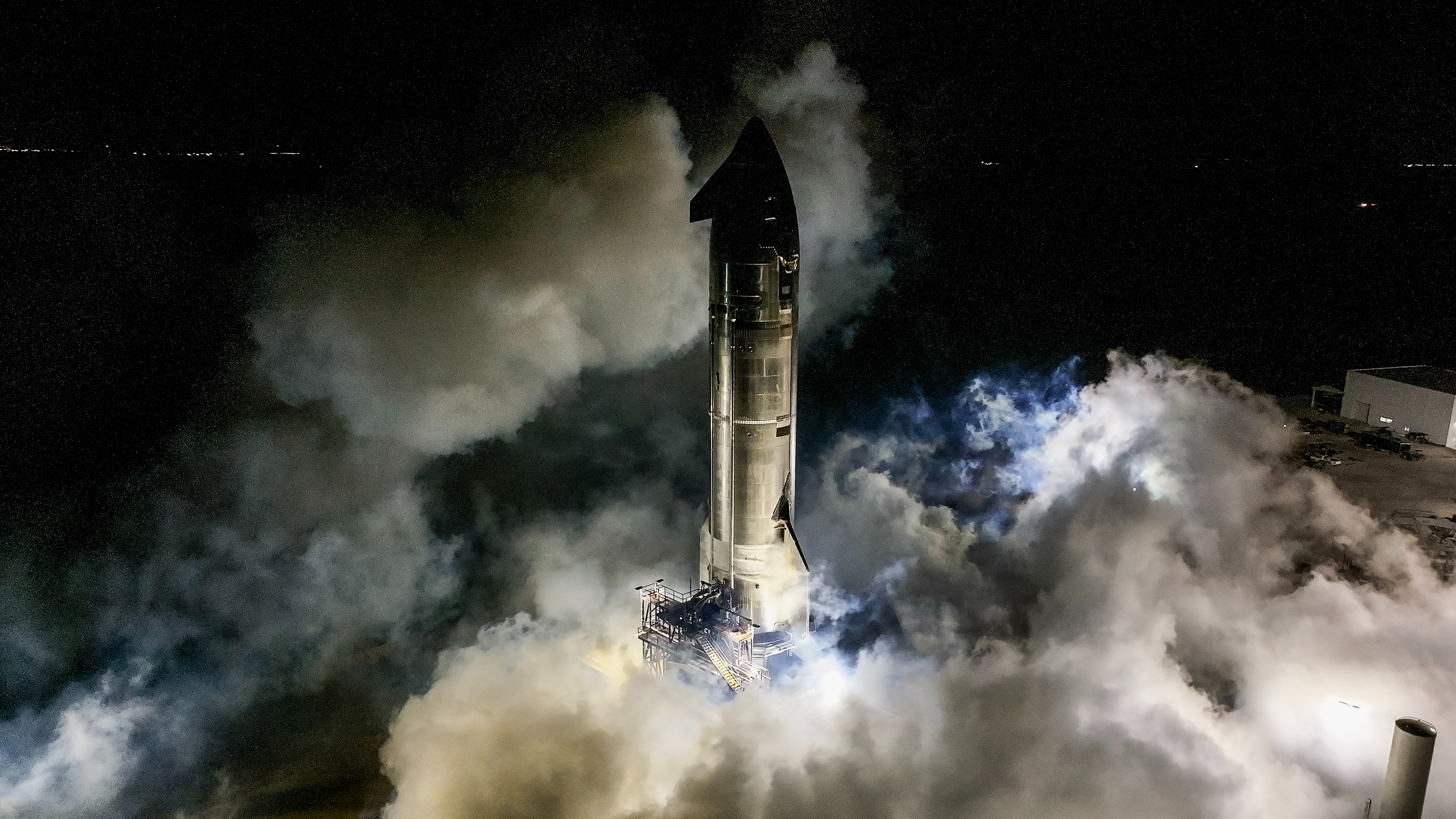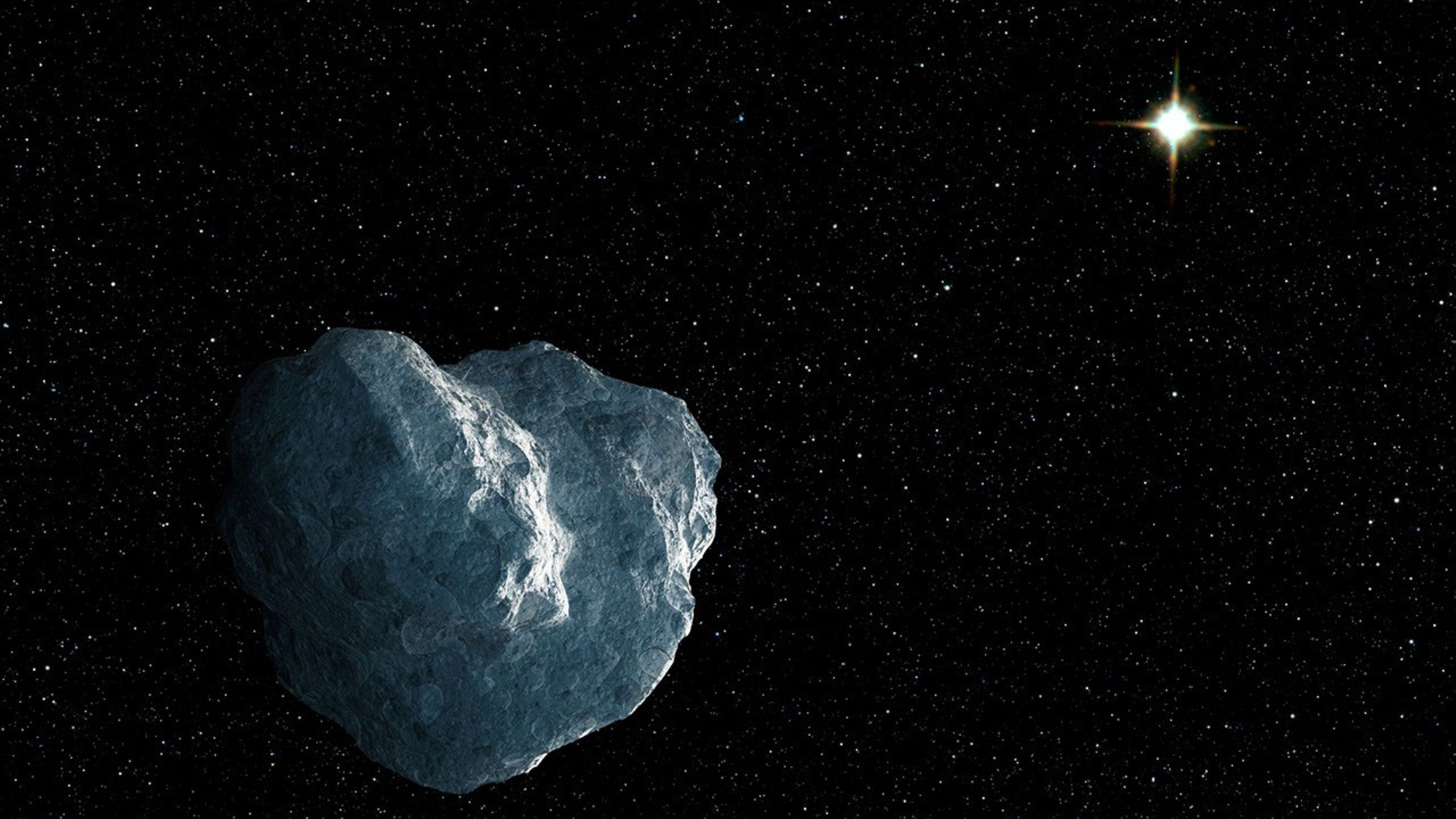Artists launch colorful 'jellyfish' balloon to the stratosphere in inaugural test flight

A group of artists has launched a colorful, jellyfish-looking craft into Earth's stratosphere as part of a unique test flight.
This past summer, the Beyond Earth artist collective completed an artwork they've designated "Living Light." The piece of art "combines biology, artificial intelligence, and aerospace technology," and "explores the connections between our blue planet and the boundlessness of outer space," they wrote in a statement. And, on June 18, they flew the artwork nearly 19 miles up (just over 30.5 kilometers) above Earth's surface to the farthest reaches of Earth's stratosphere aboard the inaugural test flight of a craft called "Neptune One."
"By sending artworks to space, that really enables us to really rethink the bounds of creative expression," space artist Richelle Gribble, one of the three artists who made this artwork who is also the co-founder of Beyond Earth and director of the gallery Supercollider, told Space.com. "And when it's beyond Earth, it really shows the capabilities of creativity to be something that always pushes the bounds and pushes us to think differently and redefine what art is and how it's made.
Related: Our mission to 'Mars' at the HI-SEAS habitat
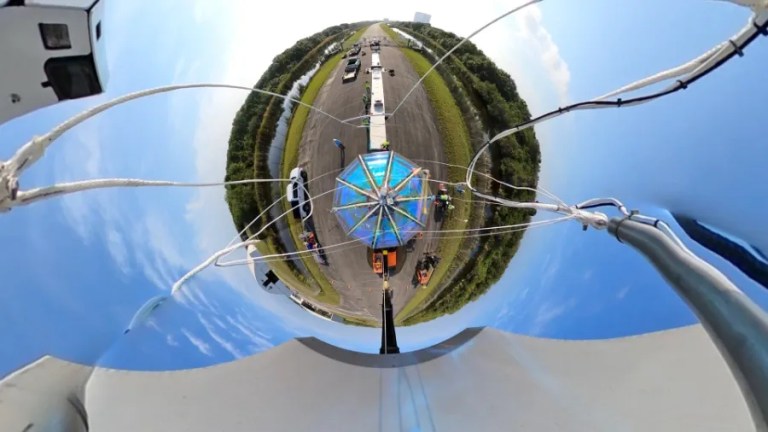
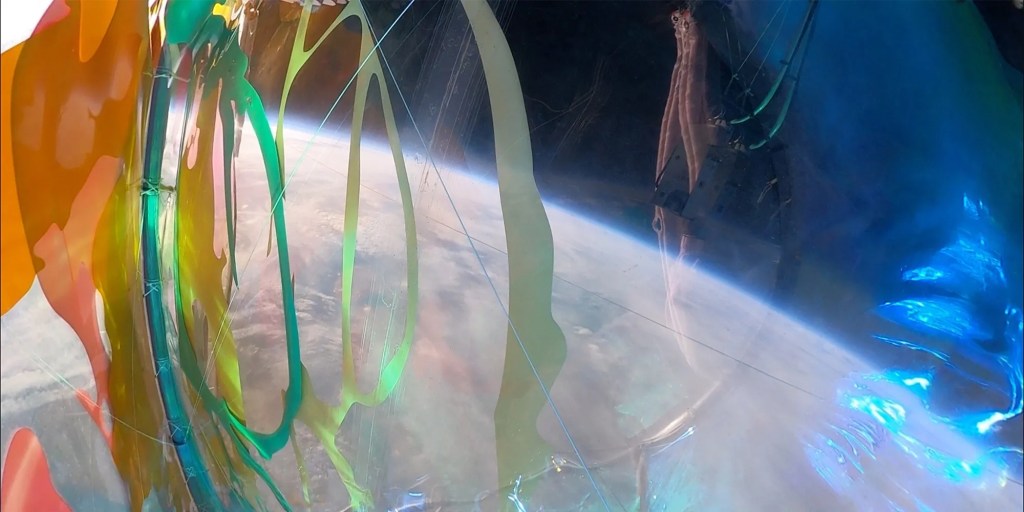
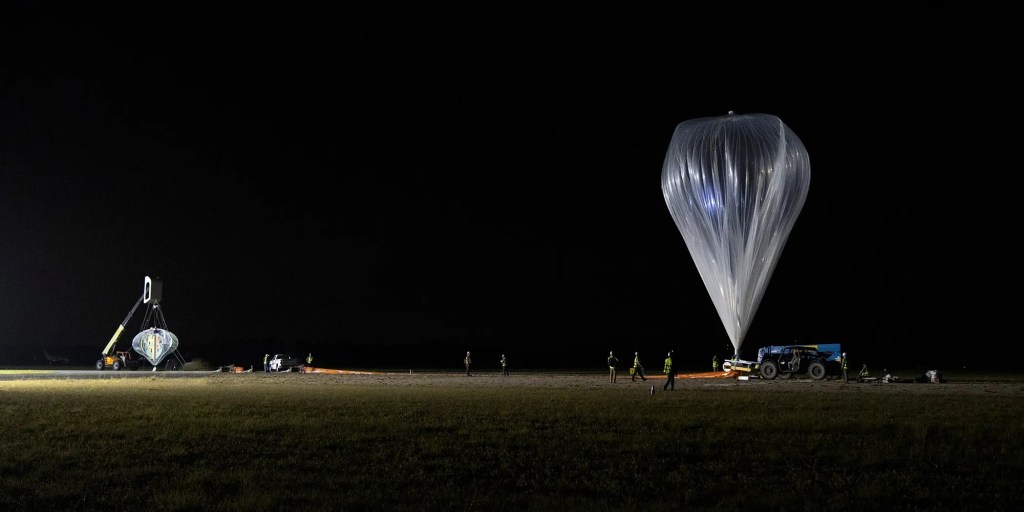
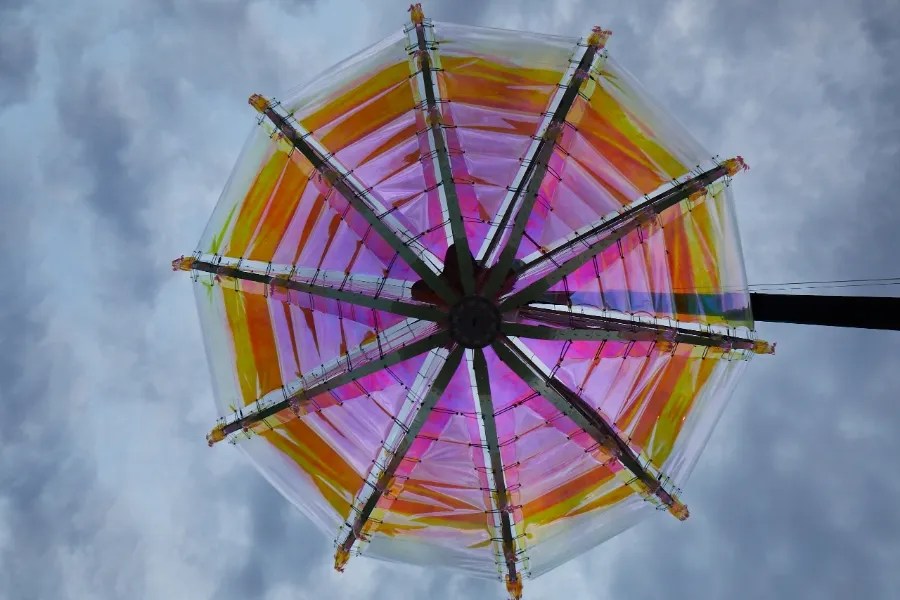
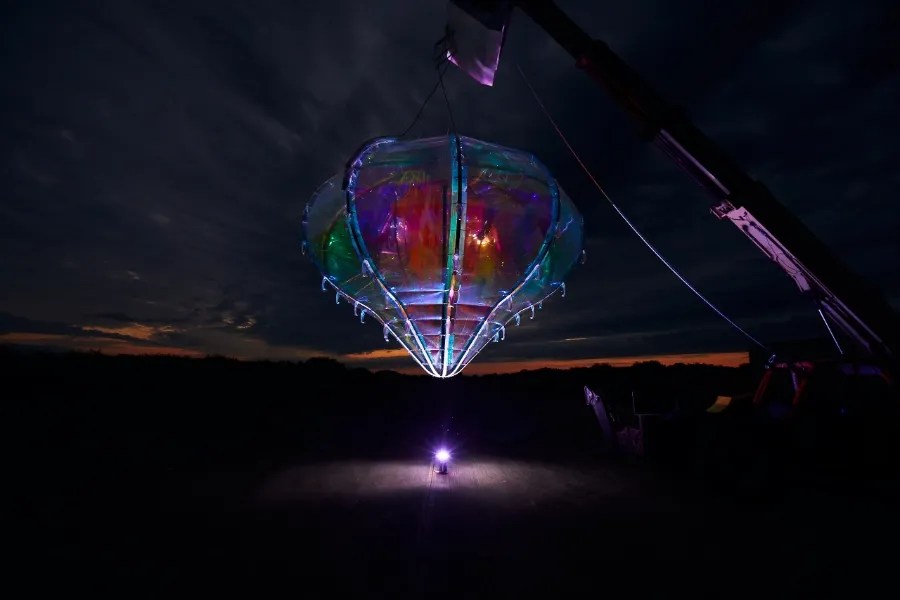

Art "Beyond Earth"
This inaugural test flight for Neptune One "marked a major step towards flying customers to space," said in a statement. "Neptune One's capsule was transformed by Living Light, an art installation by Beyond Earth. The world's largest art installation to travel to space, Living Light echoed the shape of the capsule which will eventually transport explorers to space, and adopted the appearance of a jellyfish.
"The installation represented a shared mission to amplify the essential biodiversity and interdependency of all living organisms — specifically hidden ocean life — rarely included in the story of life on planet Earth," Space Perspective added.
Gribble is one of three members of Beyond Earth. The collective also includes artists Yoko Shimizu, an artist and researcher specializing in biology and chemistry at the Ars Electronica Futurelab in Austria; and Elena Soterakis, an artist, curator and educator who founded the BioBAT Art Space gallery in New York.
Get the Space.com Newsletter
Breaking space news, the latest updates on rocket launches, skywatching events and more!
To create this collaborative launch, the trio connected with Space Perspective, a Florida-based company that designed the "Spaceship Neptune," a pressurized balloon-lofted capsule that could carry up to eight passengers and one pilot to 100,000 feet (30.5 km). Recently, the company, which was founded by originally "biospherians," Jane Poynter and Taber MacCallum. Poynter and MacCallum each lived for about two years in the dome habitat known as Biosphere 2.
"They invited us to design the entire capsule structure that would be the payload for their inaugural spaceflight," Gribble told Space.com.
The Neptune vessel is "about the size of a football field," Gribble said, adding that it took six hours to fly the artwork up to its ultimate altitude.
The ship is, as its name would dictate, inspired by the Roman god of the sea and the artistic trio took that information as inspiration. "We really wanted to create a design that was an iteration of that theme," Gribble said. "So we began to really deep dive into looking at the ocean biome, and looking at water and properties of species that live off of the Florida Space Coast."
More: Sending art to space: An interview with artist Micah Johnson
Aquatic inspiration for space-age art
For those just seeing Living Light for the first time, its ocean inspiration is clear, as the artwork emanates a jellyfish-esque shape and transparency. But jellyfish aren't the only species that made their way into this artwork.
"We decided to design a structure that is a composite of over 1,000 different aquatic species, to celebrate the biodiversity of marine ecosystems," Gribble said.
But to create a giant colorful jellyfish-shaped piece of artwork for space, it has to be able to withstand the harsh conditions of getting to space, being in space and landing back on Earth.
"When you're designing for space, it really changes the ways you think about materials," Gribble said. You "have to make it extremely lightweight, to deal with the payload parameters. People don't think of this but yes, space is extremely cold. And so we can't have materials that'll be too brittle or break or absorb too much of the UV light. So even the color choices that we selected had to reflect light to protect the art sculpture."
But these weren't even the only serious restrictions that the art team had to work with in order to create art that could withstand space. Gribble added that "designing for impact when it lands into the ocean was a big consideration. So, how to create this structure so it's resilient enough to not leave any kind of debris behind."
The team wanted to make the structure able to withstand an ocean landing to showcase it at future exhibitions and use it for future projects. But even more importantly, Gribble said, they wanted to ensure that they were doing all they could to avoid leaving any debris or waste behind in the ocean.
Gribble tested a small prototype of the art installation at the HI-SEAS (Hawaii Space Exploration Analog and Simulation) research station in Hawaii during an analog, or simulated, Mars mission in 2020. (Full disclosure, I participated in the same analog Mars mission as Gribble.)
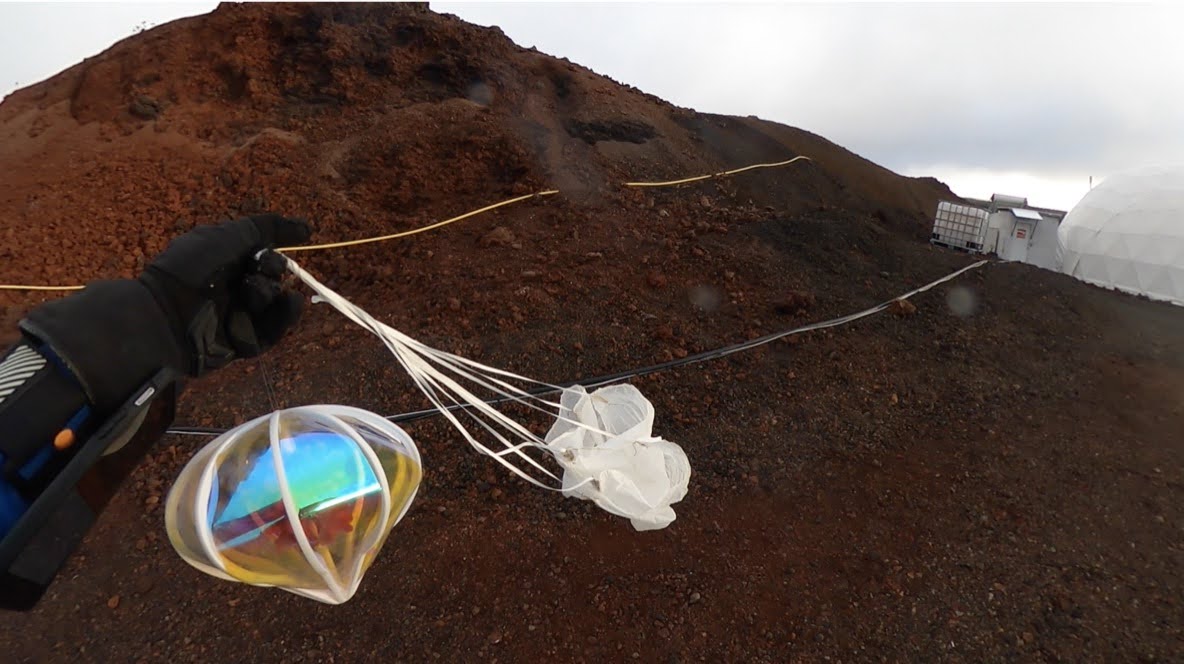
"During the HI-SEAS analog, I brought a smaller prototype, a miniature of the sculpture," Gribble said, adding that during the analog she "documented as it flew throughout the habitat and also photographed it on the Martian landscape. And this was really intended to brainstorm what it means to design artworks and art objects that are built for space environments."
But this "jellyfish" wasn't just tested and created and flown to the stratosphere all on its own. It also contained a special, tiny capsule with DNA encoded.
"The DNA capsule flown to space on Neptune One inside Living Light, was comprised of three art pieces by each of the artists who make up Beyond Earth," Space Perspective said in the same statement. "In a message “To Space, from Earth,” each work was converted to DNA and stored inside a metal vial containing an artistic message to space."
Email Chelsea Gohd at cgohd@space.com or follow her on Twitter @chelsea_gohd. Follow us on Twitter @Spacedotcom and on Facebook.
Join our Space Forums to keep talking space on the latest missions, night sky and more! And if you have a news tip, correction or comment, let us know at: community@space.com.

Chelsea “Foxanne” Gohd joined Space.com in 2018 and is now a Senior Writer, writing about everything from climate change to planetary science and human spaceflight in both articles and on-camera in videos. With a degree in Public Health and biological sciences, Chelsea has written and worked for institutions including the American Museum of Natural History, Scientific American, Discover Magazine Blog, Astronomy Magazine and Live Science. When not writing, editing or filming something space-y, Chelsea "Foxanne" Gohd is writing music and performing as Foxanne, even launching a song to space in 2021 with Inspiration4. You can follow her on Twitter @chelsea_gohd and @foxannemusic.

